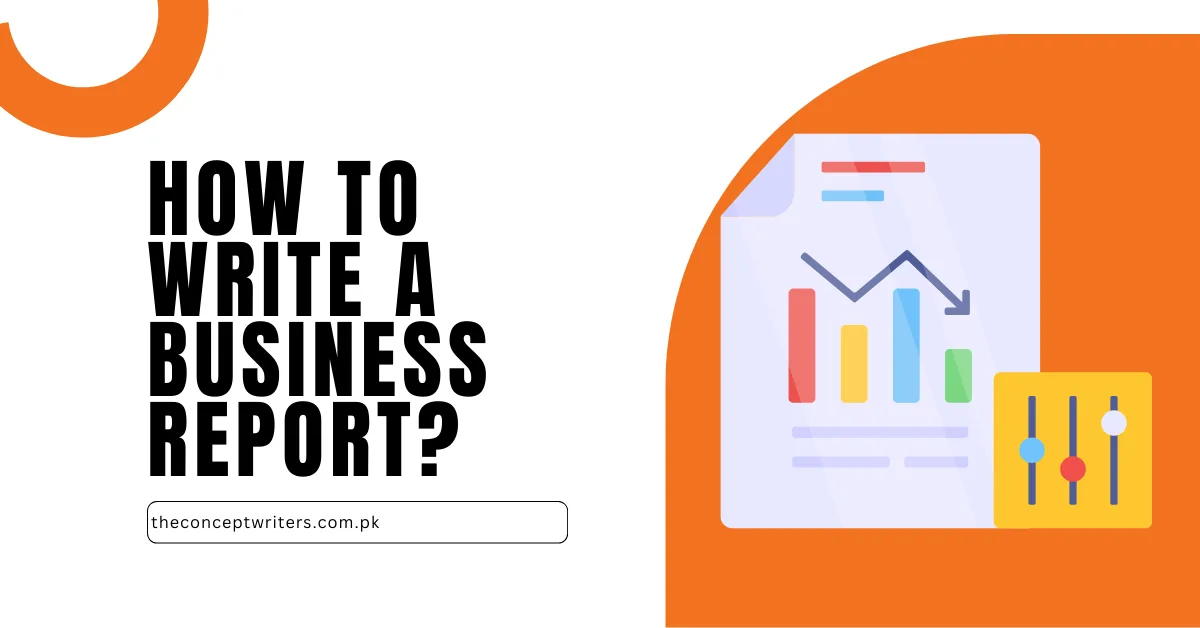How to Write a business report?
Businesses that require their leaders to make decisions based on reliable information are able to develop business reports to utilize ITS as a guide. These reports can be used as a resource. The data and performance of an organization are evaluated in business reports, and on the basis of the facts and research presented in the reports, recommendations are made. Business reports are very important to organizations. It is crucial to learn how to write a business report if you want to grow.
An Introduction to Business Reports
When writing business reports, it is critical to adhere to the highest standards of formality, objectivity, and research. Whether a report is focusing on a particular issue or an organization’s overall performance, every fact contained inside the report needs to be defined and verifiable.
It is necessary to steer clear of subjective descriptions whenever possible in a business report since objectivity is essential. You cannot claim that sales were horrible during the previous quarter if the evidence shows that sales were lower during the previous quarter. In addition to this, it is essential that a business report be objective and written from the point of view of the company, without the use of any personal pronouns or phrases like “I feel like we need more capital.”
A business report is a written document that provides information and analysis to assist decision-making in an organization. Effective business reports are concise, well-organized, and easy to understand, making them an essential tool for communicating information within a company.
Follow the steps if you want to learn how to write a business report when writing a business report:
- Define the purpose and scope of the report: Clearly state the purpose of the report, including the information you hope to convey and the intended audience. Determine the scope of the report, including what information will be included and what will be excluded.
- Gather information: Conduct research and gather data to support your findings and conclusions. This may involve interviews, surveys, financial analysis, market research, and other data-gathering methods.
- Analyze the information: Organize and analyze the data you have collected to support your findings and conclusions. Use charts, graphs, and other visual aids to help illustrate your points.
- Write the report: Start with a clear and concise executive summary that summarizes the key findings and conclusions of the report. Then, organize the information into sections, such as introduction, methods, results, discussion, and conclusion. Use clear and concise language, and be sure to include any relevant details, such as data and references.
- Review and revise: Before submitting the report, review it carefully to ensure it is accurate and easy to understand. Revise as necessary to improve clarity, and make sure that all data and sources are properly cited.
- Formatting and presentation: Give your report a professional appearance by using a standard format and layout. Consider adding a cover page, table of contents, and page numbers to make it easier to navigate.
Need your Academic Tasks ASAP?
Need assistance with your Academic Tasks? Help is on the way!
Reporting structure
No matter how many pages a report contains, it is critical to constantly format it in a way that makes it easy for readers to navigate. A great number of elements, in addition to the length of the report and the criteria of the organization, can influence its structure. The following is an example of a common and trustworthy structure that is recommended:
- Submitted matter:
You should include your name, job title, contact information, and the date you submitted the form. In addition to creating a report title, you can also add a subtitle.
- Describe the topic:
Give a summary of the subject and state the objective of your report as well as the historical context of the matter that you will be discussing.
- Observations:
The context should include the important facts, data, and findings that are pertinent to the discussion. Because this section serves as the basis for the entirety of the report, it is essential that it be as transparent and specific as possible.
- Conclusion:
In conclusion, provide responses to the questions posed by the purpose, as well as summarise and explain the most important findings.
- Make recommendations:
Provide recommendations and an explanation of how the proposed solution would operate in the event that the conclusion identifies a problem. Even though you are expressing your own opinion in this part, you should still make sure that everything is viewed from the point of view of the company.
- Provide references:
A list of all the sources that were used to compile the data should be included in the report that you are writing. If other people can see where you got your knowledge, they will be able to investigate it themselves. If you know how to write a business report then you can do good referencing as well.
After you have finished with the front matter, you will likely be asked to give an executive summary that summarises the report’s background, the most significant results, and the recommendations.
The purpose of this part is to provide readers with a high-level summary of the rest of the paper so that they can spend less time actually reading it. When determining the suitable number of pages for the executive summary, the length of the report is factored in as a primary consideration.
Revision
As stated in Essentials of Business Developing, editing is the most important step in the process of writing an effective paper. Make sure all of your facts are correct and that they are presented in an objective manner if you want your work to remain on topic and pass a proofreading test.
Before handing in your work, you should get some feedback from a coworker first, as they may be able to point out mistakes or offer suggestions for improvements.
After you have reviewed the material, you should think about how the report will look. Transform the page that contains your front matter into a cover page so that it has a more professional appearance.
If your report is going to be quite long, you should probably make a table of contents for it. It is recommended that the report should be printed on high-quality paper and that it be organized and stored in a folder or binder. Utilize bulleted lists, charts, and graphics if you want to present your data in a variety of different ways. Before presenting you should know that how to write a business report.
A business report includes the following components
- The title page
To make the more professional.
- The table of contents
It may be a good idea to include a table of contents in your report, depending on the length. For readers, this will make it easier to locate specific information.
- Summary
The report’s primary arguments are typically summarized using anywhere from a few phrases to a whole paragraph. The most important insights that may be gleaned from each area of the study are compiled in this section.
- Overview
Your report will consist of the following sections. Included are the main points, the report structure you chose, and, most importantly, the report’s objective.
- Report’s body
The body of your report offers in-depth analyses and clarifications of the claims you’ve made. If they glance at the headlines in this section, your reader will be able to get an idea of the material that is presented in the following paragraphs. The structure of this section will be determined by the types of report formats, the information and data that you give, and whether or not you require in-depth analysis. Here are some examples of headings:
- Various methods
- Analysis of findings
- Conducting research
- Insights
- Charts
Conclusion
In the conclusion section of the report, you should provide a synopsis of all the important points, arranged in the same chronological order in which they were presented.
- Recommendations
Your recommendations or suggestions for the next steps are based on the findings you noted in earlier sections. Describe how your suggestions can benefit the company.
- References:
In this area, you are required to include all of the sources that were used to compile your report.
- Appendices
Appendices provide you with the opportunity to include pertinent documents, surveys, graphs, and other items that you alluded to in the primary body of the report.
Conclusion
In conclusion, writing a business report requires careful planning, research, and organization. By following these steps and using clear and concise language, you can effectively communicate your findings and conclusions to decision-makers in your organization. Moreover, you can guide other people on how to write a business report for better reach.
You will, however, be able to write a report that is both insightful and complete if you put in the necessary amount of preparation and work toward accomplishing this goal. Even if the report is for professional reasons. You will be able to assist your firm in making rational decisions if you compile all of the pertinent information and offer it in a format that is rational and objective.
Recent Posts
Need your Academic Tasks ASAP?
Need assistance with your Academic Tasks? Help is on the way!





